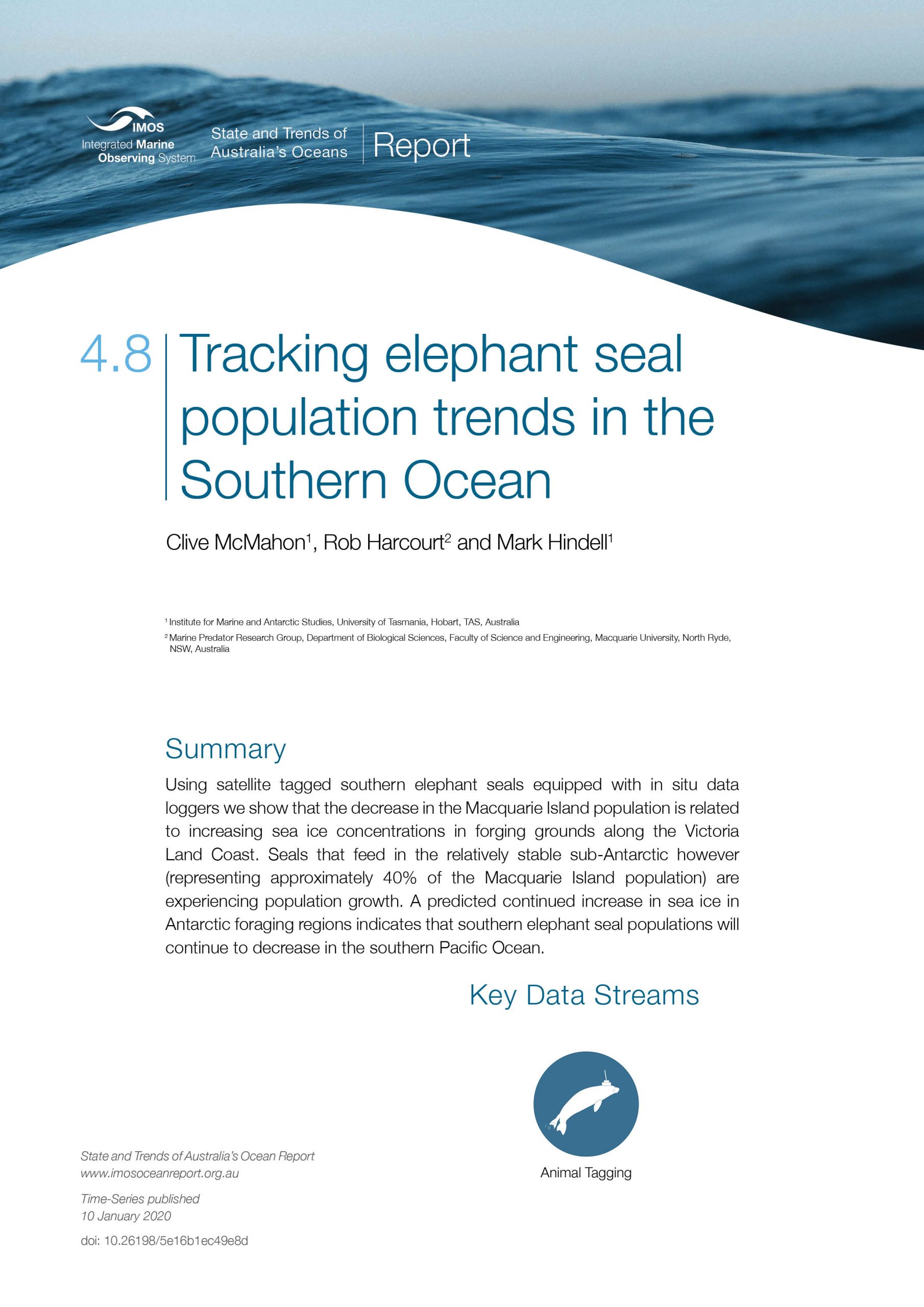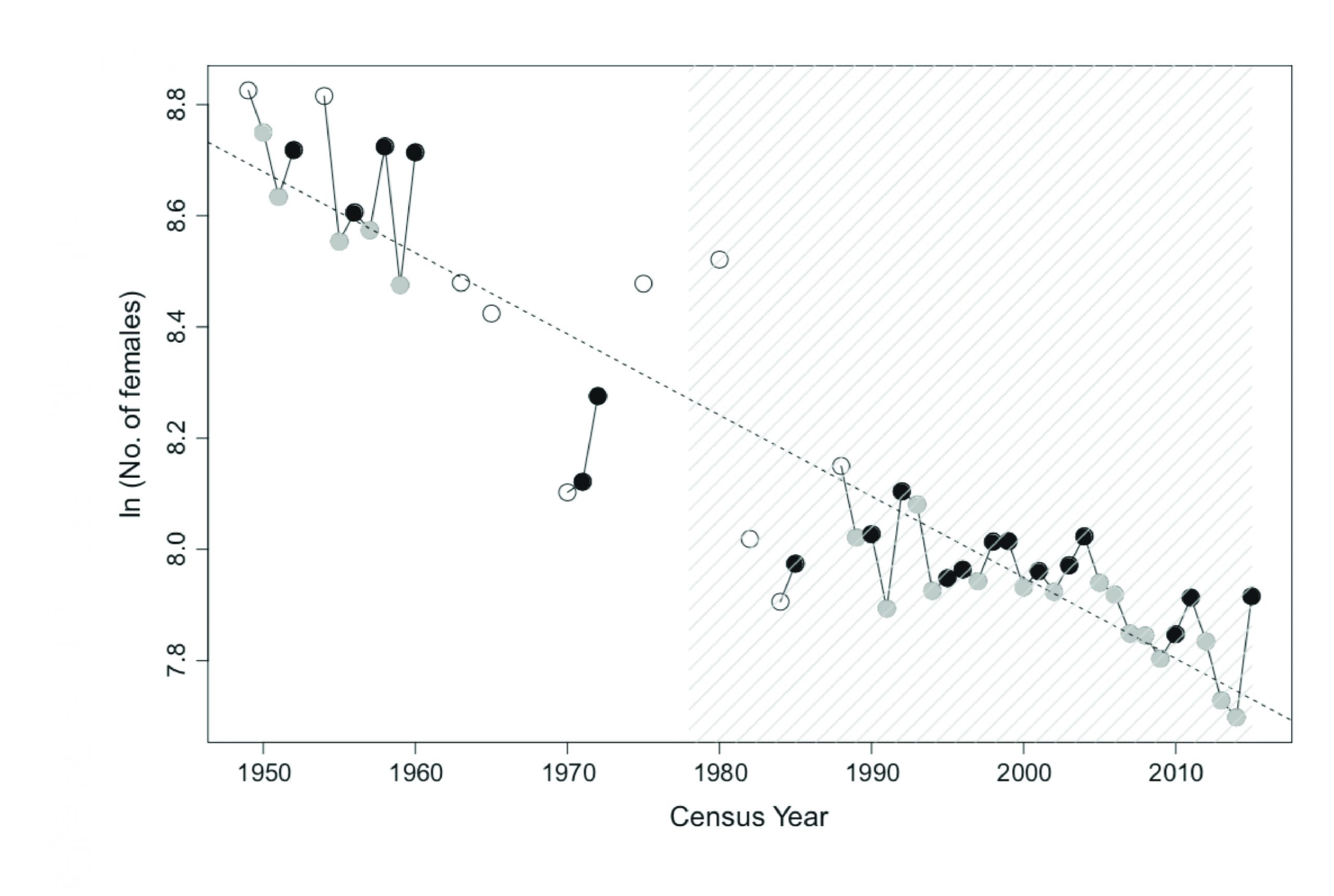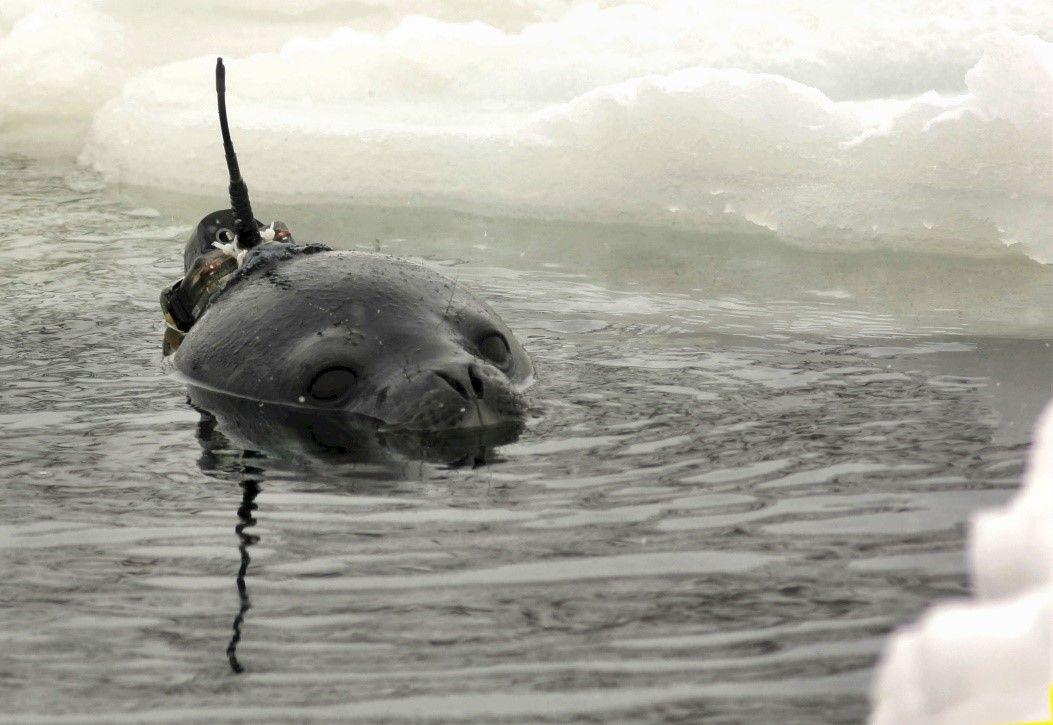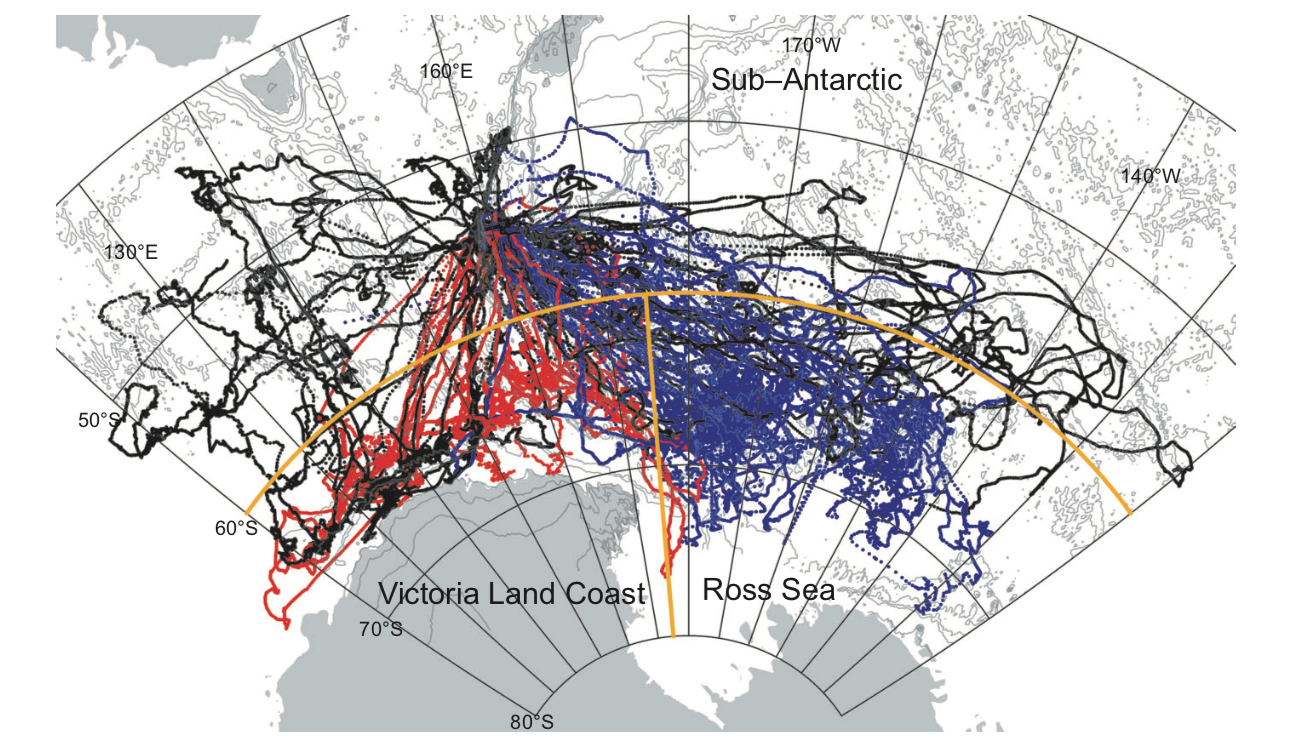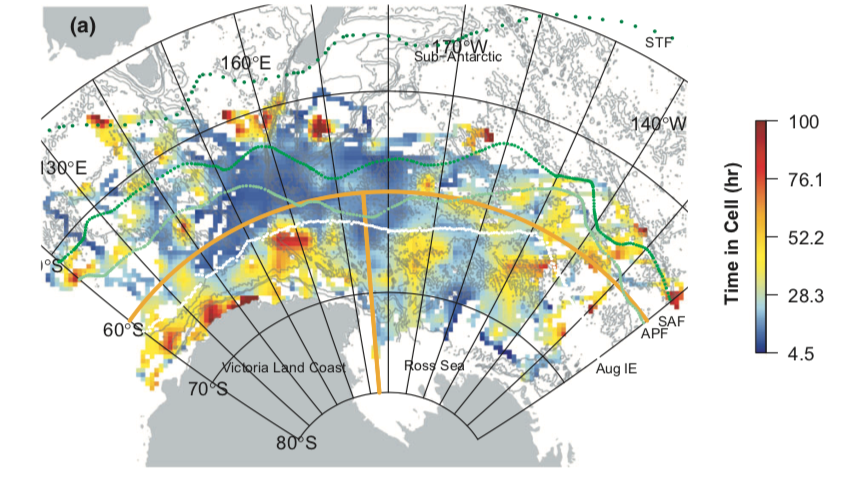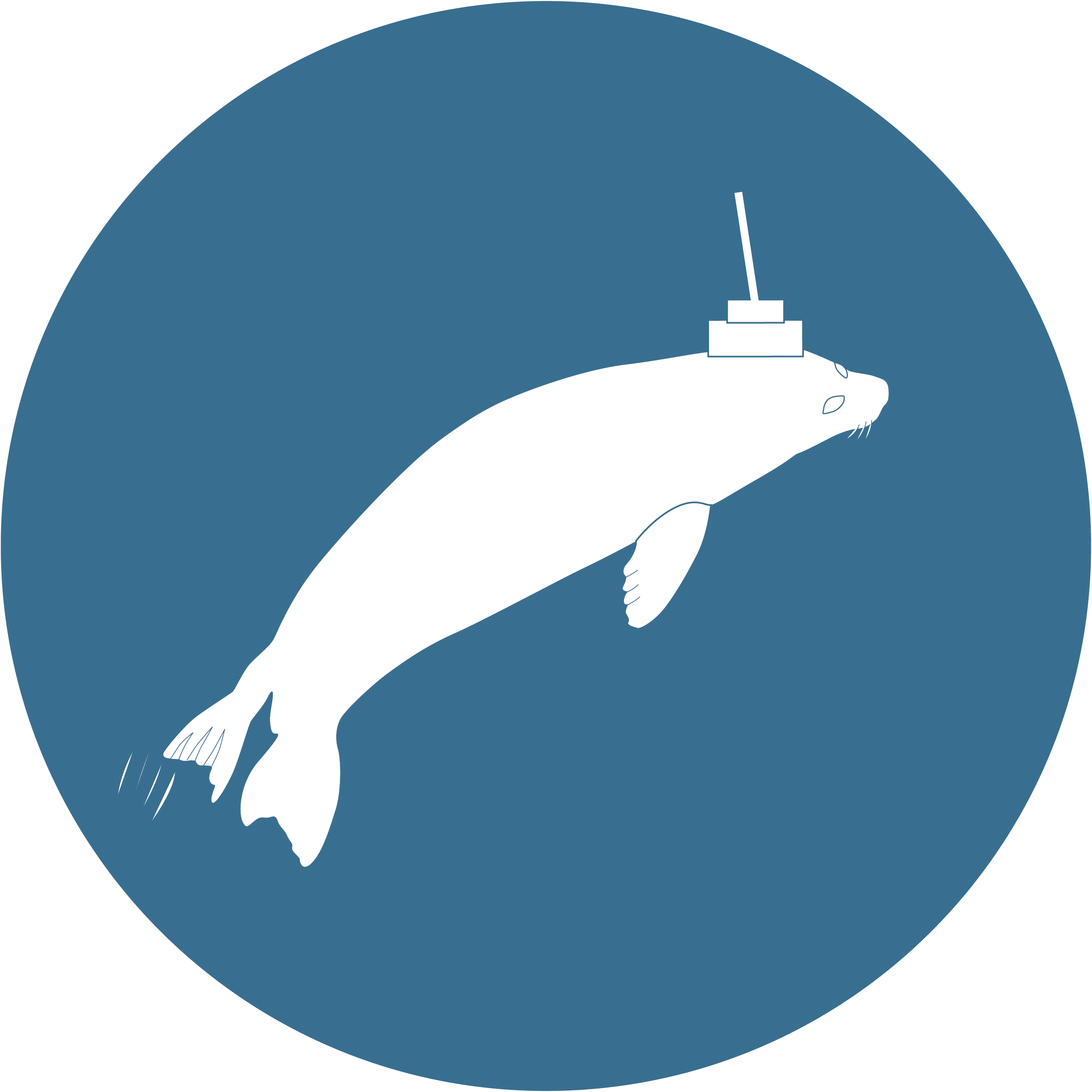Contributors
Clive McMahon1
Rob Harcourt2
Mark Hindell1
1 Institute for Marine and Antarctic Studies, University of Tasmania, Hobart, TAS, Australia
2 Marine Predator Research Group, Department of Biological Sciences, Faculty of Science and Engineering, Macquarie University, North Ryde, NSW, Australia
Key Information
Using satellite tagged southern elephant seals equipped with in situ data loggers we show that the decrease in the Macquarie Island population is related to increasing sea ice concentrations in forging grounds along the Victoria Land Coast. Seals that feed in the relatively stable sub-Antarctic however (representing approximately 40% of the Macquarie Island population) are experiencing population growth. A predicted continued increase in sea ice in Antarctic foraging regions indicates that southern elephant seal populations will continue to decrease in the southern Pacific Ocean.
Keywords
Macquarie Island, sea ice, sub-Antarctic, Ross Sea, Victoria Land
Tracking elephant seal population trends in the Southern Ocean
Download this Time Series Report
Citing this report:
McMahon C, Harcourt R, Hindell M. (2020) Tracking elephant seal population trends in the Southern Ocean. In Richardson A.J, Eriksen R, Moltmann T, Hodgson-Johnston I, Wallis J.R. (Eds). State and Trends of Australia’s Ocean Report. doi: 10.26198/5e16b1ec49e8d
doi: 10.26198/5e16b1ec49e8d
